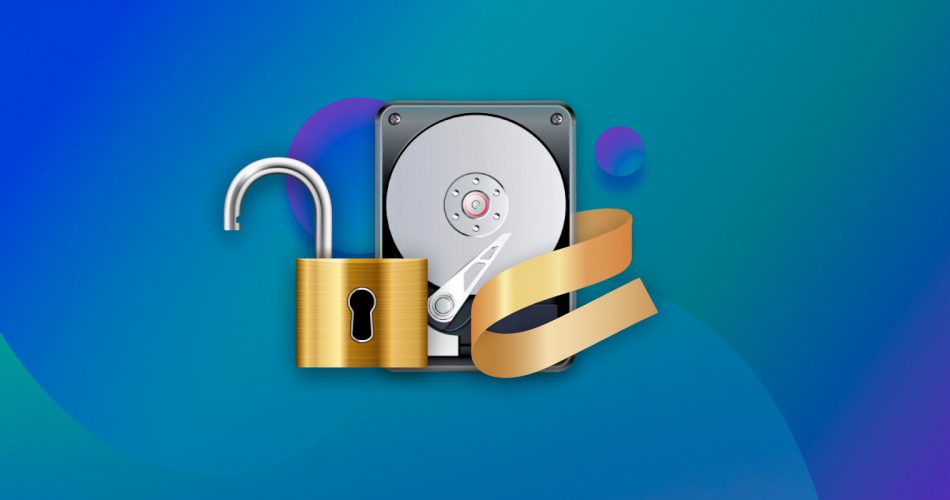We all know that open-source data recovery software has quite a few advantages. Users searching for free solutions are drawn to its availability, while those with enough technical skills might be attracted by its flexibility to customize the software to fit their needs. In this article, we've picked the best open-source data recovery software for you and will try to answer whether open-source software can compete with the top commercial solutions.
Can Open-source Data Recovery Software Effectively Compete With Paid Tools?
Before diving into the rankings, let's address the elephant in the room: can open-source solutions truly replace commercial software? The answer isn't a straightforward yes or no. It depends on your specific needs and circumstances.
Here at Handy Recovery, we think that in most cases, for basic data recovery needs, an open-source solution might be just enough. Plus, with the understanding that scanning the device itself could damage the data on it, freeware and open-source software can be a great starting point. This gives you the chance to try recovering your data completely free before moving on to commercial options.
However, while open-source data recovery software has many benefits that are tough to overlook (we've brought them up before, so I won't repeat them), in this section, we'll concentrate on its potential downsides so you can set realistic expectations.
- Open-source data recovery programs might not be as user-friendly as proprietary ones. This can include having an outdated UI or lacking a graphical interface altogether, or requiring a certain level of technical expertise. In most cases, you need to be pretty tech-savvy to comfortably and seamlessly use their features.
- Open-source software might be trickier to use and could need a better understanding of file systems and data recovery techniques to successfully get back lost data. For instance, in some cases, you might have to type in certain commands manually to achieve the result you want.
- Open-source data recovery software may not be as well-supported as proprietary software, and updates and bug fixes may be slower to arrive. In fact, as you delve deeper into the world of open-source data recovery software, you may find that many of the available options are outdated, often significantly so. For instance, the most recent version of Kickass Undelete (1.5.5) came out in 2018.
- Users may have to rely on community support for troubleshooting and technical assistance, which may not be as comprehensive as the support offered by paid software vendors. Quite often, there's a small team of developers behind such a product, or it's backed by a community. For instance, the popular open-source product PhotoRec is created by a single person, Christophe Grenier, a French software developer. The last major releases of the program (7.2 unstable or stable 7.1) happened in 2019. However, minor updates are still being released today.
- Open-source data recovery software might not be able to handle all types of data loss and may not be as extensive as paid alternatives. This is especially true for niche or professional files, like high-quality RAW photos and video files, such as NEF, CR2/3, RAF, R3D, and others.
Using open-source data recovery software can be a cost-effective way to recover lost files. However, if you've lost a large volume of data, open-source software may be less effective than freeware or paid alternatives. For example, Disk Drill Data Recovery is a leading data recovery software for Windows and macOS and its freeware trial version allows users to recover up to 500 MB of data for free (Windows only).
To help you find the right data recovery solution for your needs, we've compiled a short selection of verified paid data recovery software with generous demos/trial plans in the table below.


These solutions offer more advanced features, flexibility, and recovery options than free software, and can be a good option for users who need to perform extensive data recovery or recover a large volume of data.
However, if you're just looking to try out data recovery software or only need to recover a few files, a free tool with limited features may be sufficient for your needs.
How to Evaluate Open-Source Data Recovery Software
Before we jump into the best open-source data recovery software tools, we’re first going to explain the parameters we used to evaluate the programs. These parameters were carefully chosen based on what we believe users should prioritize in their decision-making process:
- ⚡ Recovery capabilities - Because there are so many varying types of data loss, it’s important to choose a recovery solution tailored to your specific situation. We’ve included a range of programs in this list to address specific problems, from fixing corruption to recovering lost files.
- 🗃️ File type and file system support - The program you choose must be able to scan your device for recoverable data. Therefore, we prioritized software that works with many different file types and file systems for maximum compatibility and support.
- 📅 Program relevance - It’s too often the case where open-source programs suffer from a lack of support, causing them to fade into obscurity. As such, we were sure to prioritize programs that are compatible and working with the latest versions of modern operating systems.
- ✅ Open source confirmation - There are some programs that masquerade as open-source without actually being so. We’ve checked and verified all the tools on this list to confirm that they are truly free and open-source. If you seek alternatives outside this list, we recommend you verify their reliability before use.
Now that you’re familiar with what parameters we took into consideration when making this list, let’s dive into the best open-source data recovery software tools.
Top 5 Best Open-Source Data Recovery Software
Here are our suggestions for the best open-source data recovery software solutions.
1. TestDisk (Windows, Mac & Linux)
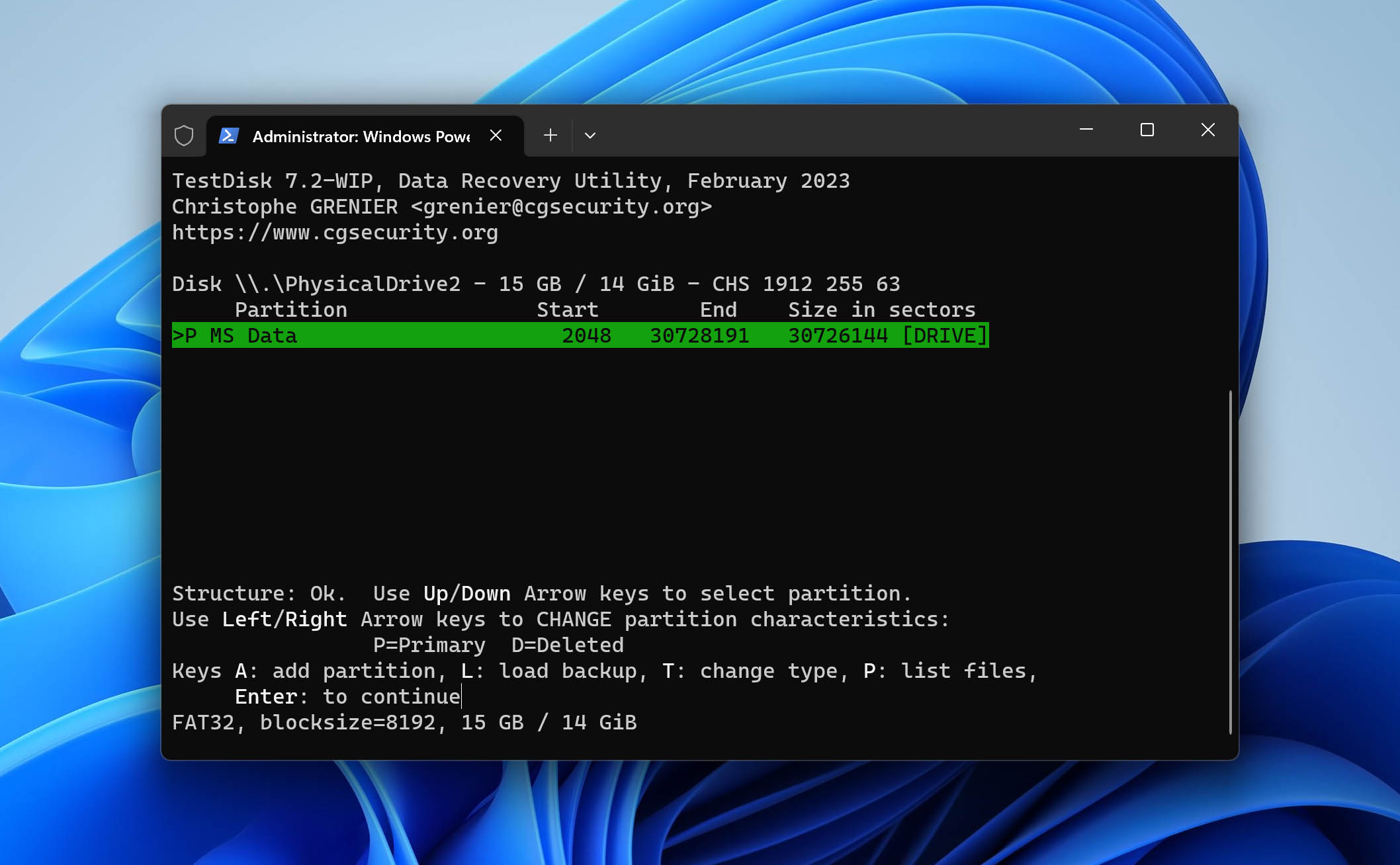
TestDisk is free data recovery software created to make non-booting disks bootable again. It can also be used to recover partitions lost to human error or malware.
Pros:
- Easy recovery of partition tables
- Can fix MFT and FAT tables
- No installation needed
- Supports the majority of popular file systems
Cons:
- Uses a command-line text interface that’s difficult to use for beginners
User Experience:
TestDisk is completely free and open-source software. I like that it needs no installation, so the process is streamlined. While the text-based command-line interface might be intimidating for beginners, TestDisk makes partition recovery simple. TestDisk can be run under DOS, Windows/Windows Server, Linux, macOS, and more. Rather than recover individual files like other conventional data recovery tools, it focuses on partition recovery by repairing damage to the partition table and rebuilding boot sectors.
PhotoRec, which will be discussed shortly, is a companion to TestDisk that recovers missing or accidentally deleted files, including photos, videos, and documents. Although there is no dedicated support for TestDisk, the program is still being developed and includes an active user base through which you can seek support by using the public forum.
Criteria |
Value |
Versions / Licensing |
v7.1 (v7.2 Beta) / Freeware |
System requirements |
DOS/Win95/Win98, Windows 11/10/8.1/8/7/Vista/XP, Windows Server 2022/2019/2016/2012/2008/2003, Linux 64-bit systems, macOS X (32 and 64-bit systems) |
Supported languages |
Documentation available in English, Chinese, German, Spanish, French, Hungarian, Persian, Italian, Japanese, Korean, Dutch, Polish, Portuguese, Russian, and Turkish |
Supported file systems |
FAT, exFAT, NTFS, ext2/ext3/ext4, Linux RAID 1/4/5/6, and more |
Last updates and news |
TestDisk v7.1 was released July 7, 2019 |
Recovers formatted data |
No, TestDisk cannot recover formatted partitions. It can only restore missing partitions |
2. PhotoRec (Windows, Mac & Linux)
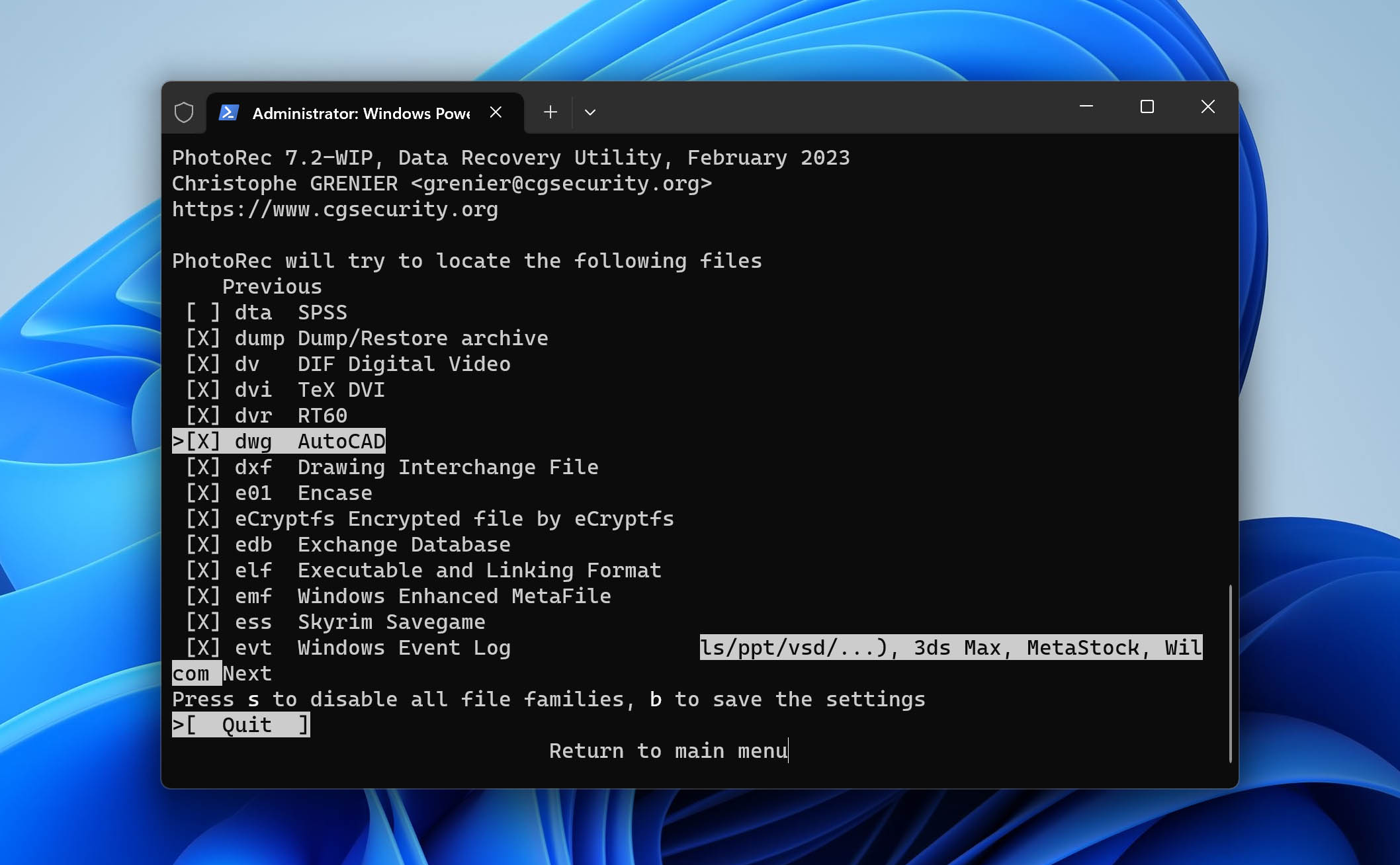
PhotoRec is free data recovery software that can retrieve deleted files, including videos, pictures, and documents from many types of devices such as CD-ROMs, hard disks, and digital cameras like Canon, Nikon, and others (so long as they are connected as USB Mass Storage, not MTP).
Pros:
- Recovers files in more than 480 formats
- Bypasses the file system to recover data by signature
- Custom file types can be added
Cons:
- The interface can be difficult to understand and use for beginners
User Experience:
PhotoRec is free and can be used with HDDs, SSDs, USB memory drives, memory cards, and various digital cameras connected as a storage device to undelete photos, videos, documents, and other files. It’s a companion to TestDesk but works differently in terms of how it recovers your data.
While TestDisk focuses on repairing the underlying damage that affected the partition table and boot sector to restore your data, PhotoRec instead allows you to recover independent files directly. Unlike other recovery tools, it exclusively relies on recovery by file signature. A benefit of this is that it can be used with basically any device by bypassing the file system, but a downside is that it doesn’t allow the recovery of original file names and folder structures for this reason. The tool can be run through a Command Line Interface (CLI), or you can use the user interface provided with qPhotoRec.
Criteria |
Value |
Versions / Licensing |
v7.1 (v7.2 Beta) / Freeware |
System requirements |
DOS/Win95/Win98, Windows 32-bit (Windows Vista and Server 2008 and above) and 64-bit systems, Linux 64-bit systems, macOS (32 and 64-bit systems) |
Supported languages |
Documentation available in English, Chinese, German, Spanish, French, Hungarian, Italian, Russian and Turkish |
Supported file systems |
None (all files are recovered by signature) |
Last updates and news |
PhotoRec v7.1 was released July 7, 2019 |
Recovers formatted data |
Yes, PhotoRec can recover files from a corrupted file system or reformatted partition |
3. FreeRecover (Windows)
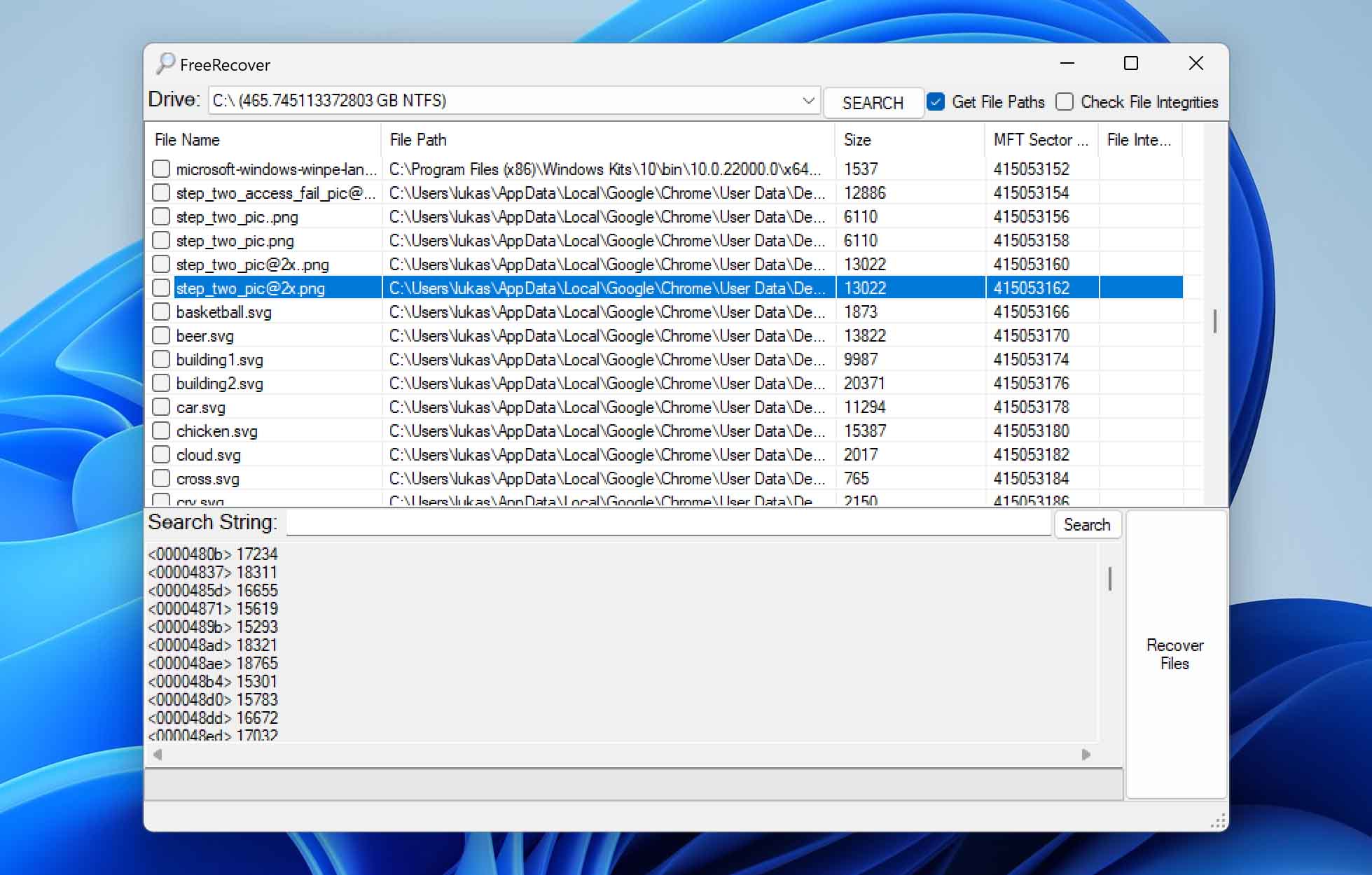
FreeRecover is an open-source file recovery program that is compatible with the NTFS file system. Released in 2013, it’s a user-friendly program that enables files to be recovered easily.
Pros:
- Simple Graphical User Interface suitable for all users
- Allows the user to search through deleted files
Cons:
- Requires the .NET framework to run
User Experience:
I was pleasantly surprised after using FreeRecover. Although it doesn’t have many reviews and isn’t the most popular data recovery tool, it does the job well. The interface is engaging and simple to understand.
FreeRecover also retrieves the original file paths of missing or corrupted files and provides estimates for their integrity. The best feature by far is that I could search for the files I wanted to recover. If you remember the name or path of the file you need, your job is already nearly done.
While it’s a great recovery tool, FreeRecover does have its limitations. It can only run if you have the .NET framework on your system, and it can only recover files from NTFS drives.
Criteria |
Value |
Versions / Licensing |
GNU General Public License |
System requirements |
Windows XP, Vista, 7, 8, 10, 11 |
Supported languages |
English |
Supported file systems |
NTFS |
Last updates and news |
FreeRecover was last updated February 6, 2017 |
Recovers formatted data |
Yes, FreeRecover can recover formatted and deleted files |
4. Kickass Undelete (Windows)
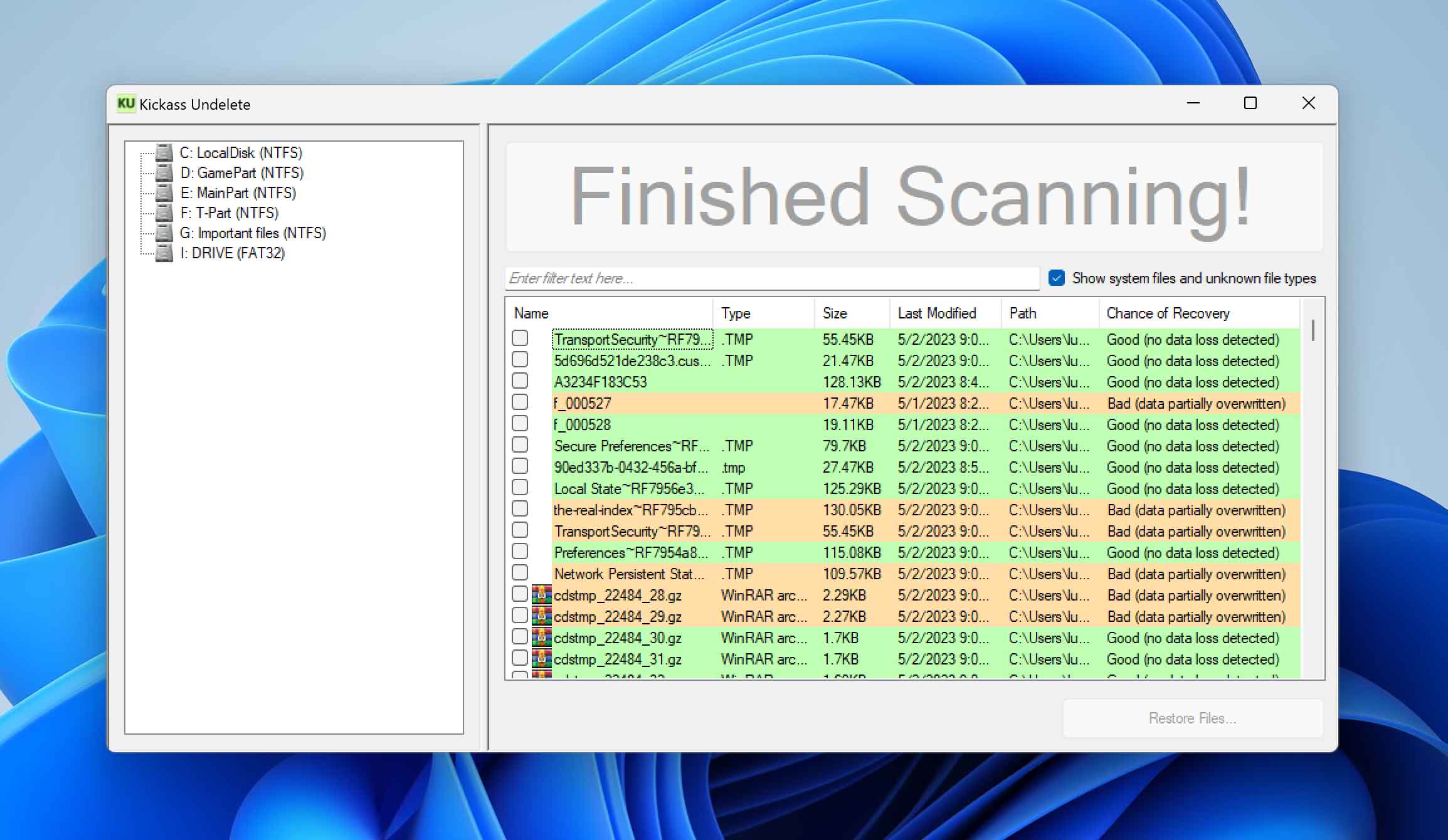
Kickass Undelete makes file recovery easy. It’s a free open-source tool that you can use for Windows to retrieve files that have been deleted or lost but that have not been overwritten and are still recoverable.
Pros:
- User-friendly interface
- Filter by extension and filename
- Supports FAT and NTFS systems
Cons:
- Sometimes crashes after file recovery
- Only supports Windows systems
User Experience:
While using Kickass Undelete was a pretty good experience initially, the program crashed after I retrieved my files. This may have been an anomaly since that was the only time the software crashed.
Its simple and user-friendly interface makes it an attractive file recovery option for beginners. You can also sort through your files by name and extension to find important documents immediately instead of looking through files manually.
Criteria |
Value |
Versions / Licensing |
v1.5.5 / Freeware |
System requirements |
Windows XP, Vista, 7, 8, 10, 11 |
Supported languages |
English |
Supported file systems |
NTFS and FAT |
Last updates and news |
Kickass Undelete was last updated December 10, 2018 |
Recovers formatted data |
Yes, Kickass Undelete can recover deleted and formatted files |
5. Foremost (Linux)
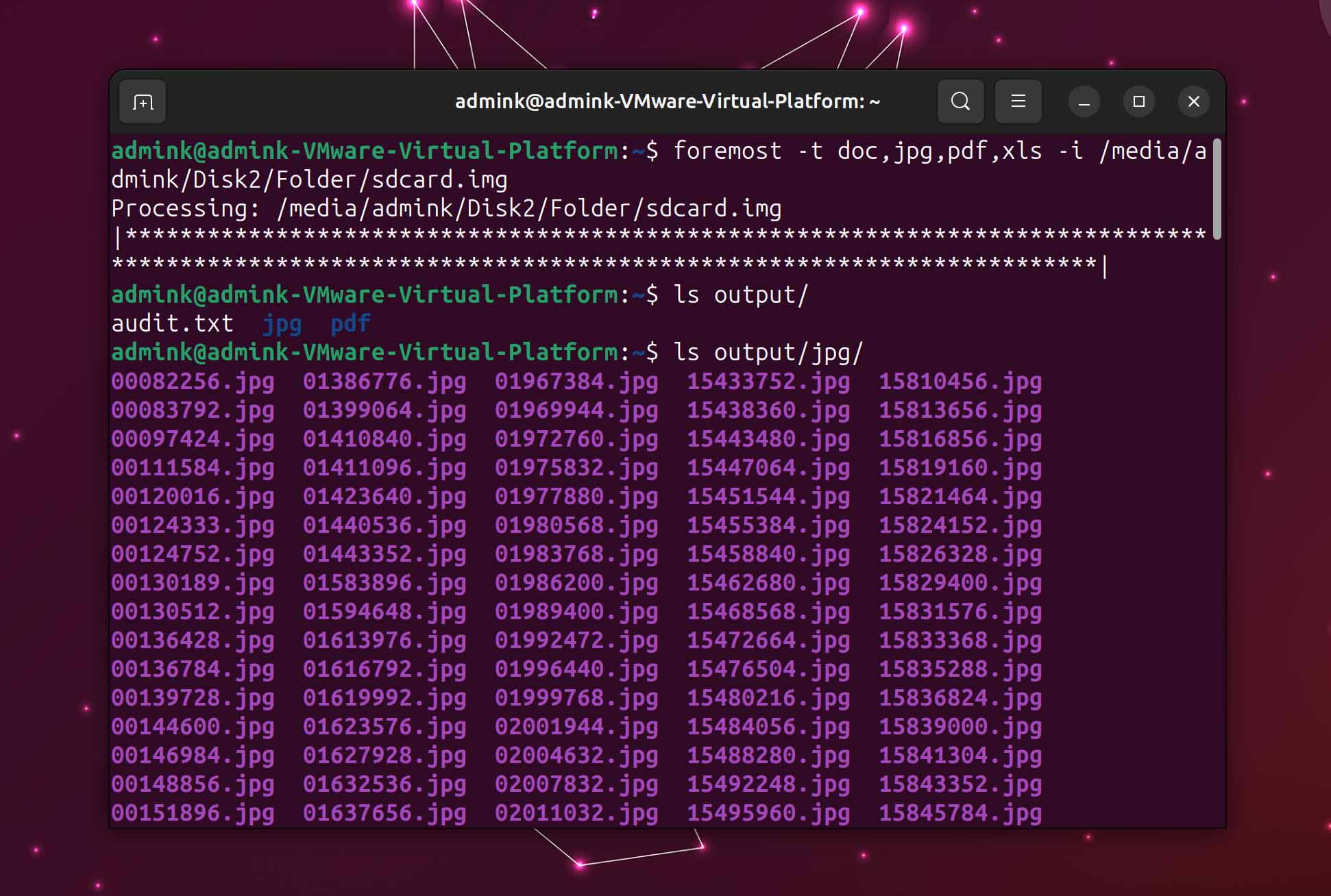
Foremost is an open-source data recovery tool that is designed to recover files based on their headers, footers, and data structures. It was created by the U.S. Air Force Office of Special Investigations (OSI) to recover deleted files from digital media.
Foremost is widely used by digital forensics professionals, law enforcement agencies, and data recovery specialists. It is available for Linux and other Unix-based operating systems, and it can be run from a command line interface.
Pros:
- Not file-system dependent. This program recovers files by analyzing device memory and identifying file signatures configured in the software
- Customizable file type recovery, allowing users to save time and increase the chances of successful recovery
- Command-line options for advanced users
- Foremost is open-source and free to use
Cons:
- Foremost doesn't have a graphical user interface, which may be a disadvantage for some users
- The software doesn't support RAID recovery
User Experience:
Overall, Foremost is a powerful tool for recovering lost or deleted data, and it is an excellent choice for anyone who needs to recover important files from a damaged or corrupted disk.
Criteria |
Value |
Versions / Licensing |
Latest version 1.5.7 / Open Source |
System requirements |
Linux/Unix |
Supported languages |
English |
Supported file systems |
Not file-system dependent |
Last updates and news |
Foremost was last updated May 9, 2017 |
Recovers formatted data |
Yes, Foremost can recover files from a corrupted file system or reformatted partition |
For Beginners: A Quick Intro To Data Recovery Software
Data recovery software makes it possible for you to retrieve corrupt, lost, or unintentionally deleted files from your hard drive, external hard drive, USB, memory card, or gaming device. While data recovery software is usually quite expensive, some options are open-source and free to download and use.
When Is It Worth Using a Data Recovery Tool?
The tools mentioned are indispensable but they only work in certain conditions. The most important point to remember regarding data recovery software is that once the original file has been overwritten, it can no longer be recovered with software.
For this reason, the most important thing you can do after discovering you have experienced data loss is to stop using the storage device that contained the lost files. The faster you stop using the device, the better your chances of getting them back.
Your next steps are determined by whether you want to recover the deleted data, formatted storage, or corrupted storage.
Recovery of Deleted Data
If you’ve accidentally deleted a file, it isn’t immediately erased from your hard drive. Instead, the space it occupies is marked as being available to the operating system. It may be overwritten when new data is saved to the device. With the right open-source file recovery software, you can safely retrieve it.
Recovery of Formatted Storage
Recovery software can also help if you have inadvertently formatted a drive or partition. In cases of physical damage, it is unlikely that recovery software will be able to help. In these situations, it's best to contact a data recovery service. But, if the damage was caused by a logical issue, you can recover the formatted storage with an appropriate open-source tool.
Recovery of Corrupted Storage
Partitions can become unreadable as a result of corruption that damages the file system, partition table, or even the partition itself. In such cases, you can still recover your data directly, but you also have the option of repairing the underlying damage to restore the corruption partition or disk to its original state with capable software.
In Conclusion
It’s best to conduct thorough research to select recovery software that suits your needs so you can get your important files back as soon as possible.
If you’ve experienced file corruption on a large scale, it’s advisable to use a reliable, commercial product to recover your data. These open-source solutions give you a good chance of recovering a limited amount of files and will give you a sense of how data recovery software works.
This article was written by Ian Haynes, a Author at Handy Recovery Advisor. It was recently updated by Jordan Jamieson-Mane. It was also verified for technical accuracy by Andrey Vasilyev, our editorial advisor.
Curious about our content creation process? Take a look at our Editor Guidelines.
